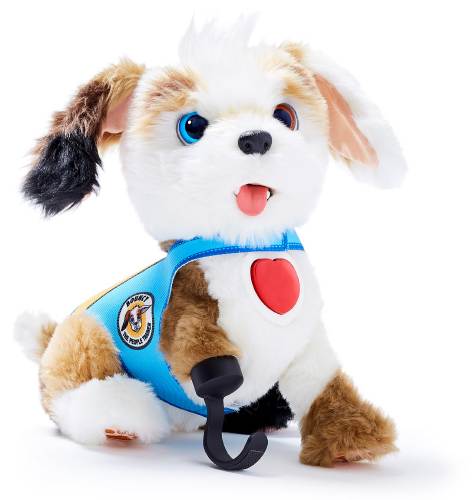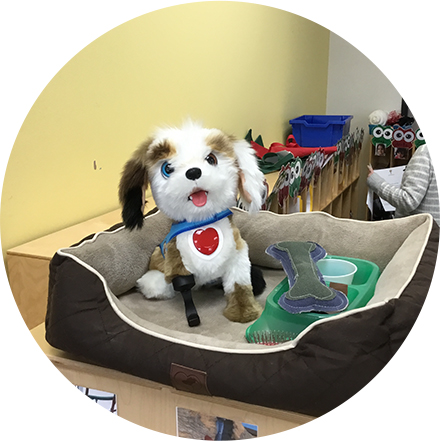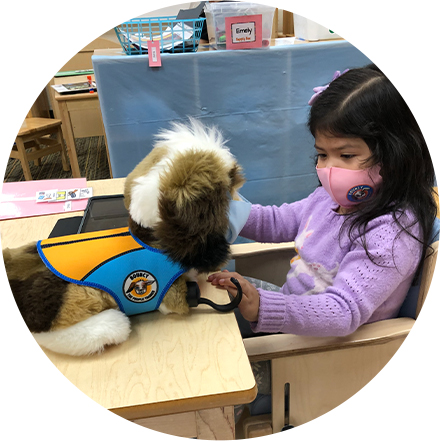Breathing Bouncy Animatronic

Breathing Bouncy is a “smart” plush toy for self-soothing, based on the same Bouncy character who stars in his own line of educational apps, music videos, interactive and print story books, coloring books and journals. Animatronic Bouncy is a bridge between Bouncy’s digital and physical worlds. The animatronic Breathing Bouncy service dog uses robotic technology to integrate training and support at a whole new level.

What does Breathing Bouncy the animatronic service dog actually do?
Bouncy actually breathes, his chest and belly go in and out, and his breathing becomes distinctly audible at a slow-normal pediatric respiratory rate for kids age 4-7. Bouncy says, “Let’s hold each other, heart-to-heart and belly-to-belly, so we can breathe together.” Bouncy’s heart lights up with the same rhythm. Bouncy also sings calming chants and lullabies, and coaches children in how to slow their breathing in ways that science has shown lead to calmer states. Breathing Bouncy acts both as a therapy dog (a constantly comforting presence) and a personal trainer, modeling and teaching key skills linked to strength and resilience in the face of anxiety or stress. Changing self-talk and practicing deep breathing to reduce stress reactions helps children become more in charge of themselves – vulnerability is transformed into agency.

Breathing Bouncy combines the best of app-based skill training, with the intimacy and attachment associated with memorable, treasured plush toys, and the kinesthetic experience made possible by robotics, all the while drawing on service dogs’ cultural associations with safety, comfort and protection.
- Breathing Bouncy has a particular role in kids’ lives: a personal service dog, who comforts them during hard times, and trains them in skills to become both strong and calm.
- Breathing Bouncy is a “co-regulator.” Bouncy doesn’t just tell kids what to do, Bouncy does it with them, breathing deeply as they do.
- Breathing Bouncy is not a generic plush pup, but rather a multi-breed one with mis-matched eyes, whose mixed colors and characteristics mirror an increasingly diverse population, making it easier for many children to identify with him.
- Breathing Bouncy is disabled, uses a prosthetic AND is a model of strength and resiliency.

Additional suggestions for how, when and where to use Breathing Bouncy in a classroom:
- Put Bouncy in an easily accessible space of his own. For example, a calm down corner, or a reading area to practice the breathing strategy for self-calming.
- Make being Bouncy’s handler (feeding, grooming and dressing) a rotating class job to develop responsibility and feelings of co-regulation with Bouncy.
- Bring Bouncy to PE, outside time; wherever the class goes, Bouncy can go.
- Reinforce breathing techniques by singing the same songs Bouncy sings at transition points during the day.
- Bring Bouncy to a dramatic play center to dress up and groom.

For language supports:
- Keep by your side for Bouncy music videos and books in lessons that highlight the two most useful language structures for supporting good behavior: IF/THEN sentence structure for consequential thinking and BOTH/AND to help kids process mixed feelings, especially toward parents under stress.
- Use with Bouncy music videos and books to develop a vocabulary for basic feelings.
- Direct students to put Bouncy dog in various positions (over head, under arms, etc.) to teach prepositional awareness.



